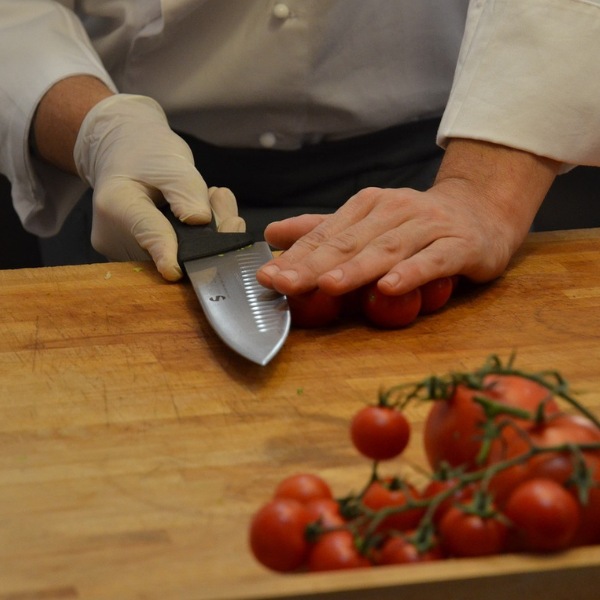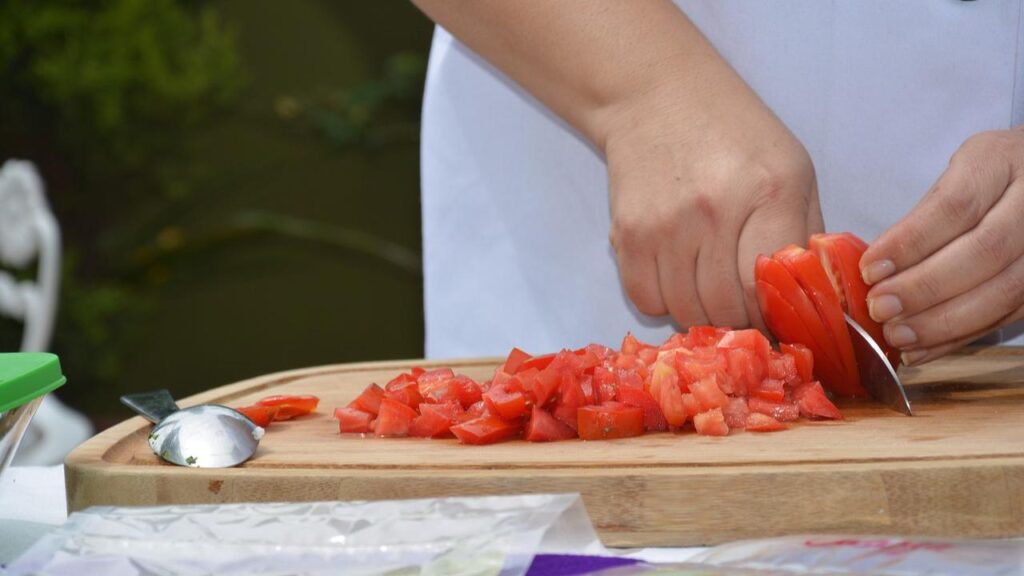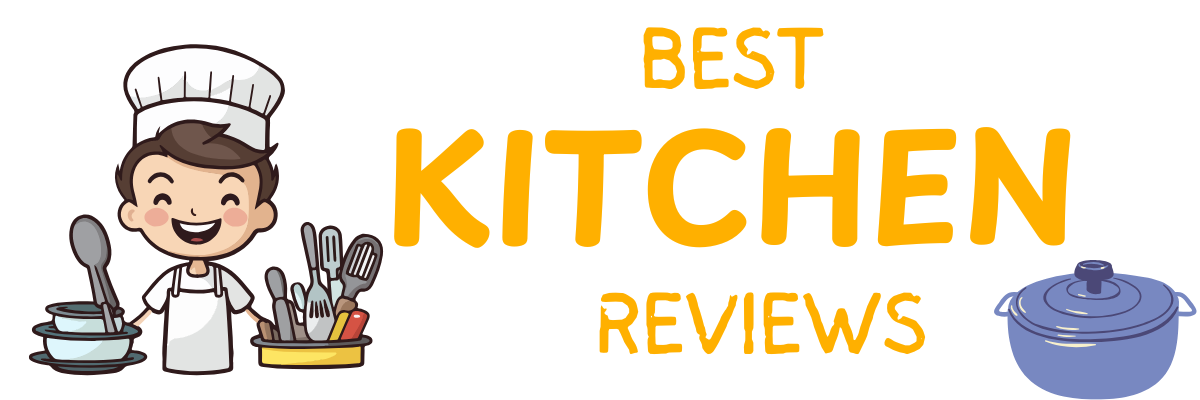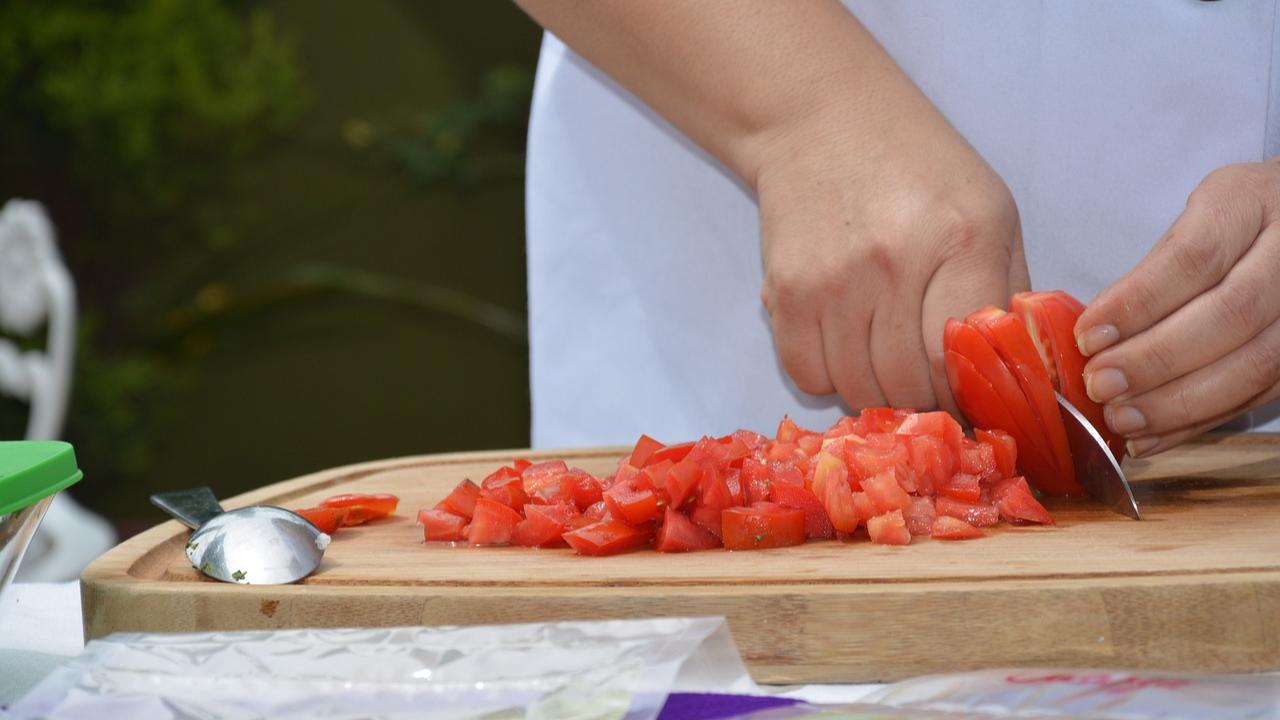If you’ve ever stepped into a professional kitchen, you might have noticed chefs consistently choosing wooden cutting boards over other types. But why is that? Why do chefs prefer wooden cutting boards when so many alternatives like plastic or steel are available? The answer lies in the unique benefits wooden boards offer. From better hygiene to being knife-friendly, these boards are not just kitchen tools but a vital part of every chef’s workflow.
This article explores the reasons behind this preference, shares tips for maintaining wooden boards, and explains how they can elevate your cooking experience.
Why Do Chefs Prefer Wooden Cutting Boards?

Chefs choose wooden cutting boards because they balance durability, hygiene, and practicality in the kitchen. Wooden boards are gentle on knives, sustainable, and have natural antibacterial properties that keep food preparation safe. Unlike plastic, which can harbor bacteria in scratches, or steel, which dulls knife edges, wooden cutting boards stand out as the ideal option for professional kitchens.
Benefits of Wooden Cutting Boards
Wooden cutting boards bring a range of advantages that make them the top choice for chefs. Let’s dive into these benefits:
- Knife-Friendliness
Wooden boards are softer than steel or plastic, which helps preserve the sharpness of your knives. This feature is especially important for chefs, who rely on precision tools for their craft. - Durability and Longevity
High-quality wooden boards, especially those made from hardwoods like maple or walnut, can last for years with proper care. Their dense surface resists deep cuts, making them a long-term investment. - Natural Antibacterial Properties
Hardwoods like maple and cherry have tight grain structures that make it harder for bacteria to penetrate the surface. This natural resistance to bacteria ensures safer food preparation. - Eco-Friendly
Wooden cutting boards are biodegradable and sustainable, unlike plastic boards, which contribute to environmental waste. This makes them an eco-conscious choice for any kitchen. - Aesthetic Appeal
Wooden boards bring warmth and elegance to your kitchen. Their natural look complements both modern and rustic kitchen styles.
Wooden Cutting Boards vs. Plastic
Many people wonder whether wooden or plastic cutting boards are better. Here’s how they compare:
| Feature | Wooden Cutting Boards | Plastic Cutting Boards |
|---|---|---|
| Knife-Friendliness | Gentle on knife edges | Can dull knives over time |
| Durability | Long-lasting and resistant to wear | Prone to warping and scratches |
| Hygiene | Naturally antibacterial | Can trap bacteria in scratches |
| Eco-Friendliness | Biodegradable and sustainable | Non-biodegradable |
| Maintenance | Requires occasional oiling | Easy to clean but less durable |
Chefs prefer wooden cutting boards because they offer superior hygiene, better knife preservation, and environmental benefits compared to plastic options.
Wooden Cutting Boards vs. Steel
Steel cutting boards are rare in professional kitchens, and for good reason. Let’s see why wooden boards are the better option:
| Feature | Wooden Cutting Boards | Steel Cutting Boards |
|---|---|---|
| Knife-Friendliness | Gentle on knives | Dulls knives quickly |
| Surface Stability | Stable and easy to work on | Can be slippery |
| Aesthetic Appeal | Warm and natural look | Industrial appearance |
| Hygiene | Naturally antibacterial | Prone to surface contamination |
Steel boards might look sleek, but their disadvantages, especially regarding knife damage, make them less practical than wooden cutting boards.
Related Article: Which Cutting Board Is Best: Wood or Steel?
Hygiene of Wooden Cutting Boards
One of the most common misconceptions is that wooden cutting boards are harder to clean. However, with the right care, they can be just as, if not more, hygienic than other materials.
- Daily Cleaning Tips: After each use, wash the board with warm soapy water. Avoid soaking it in water, as this can cause warping.
- Disinfecting: Use natural methods like rubbing coarse salt and lemon on the surface to clean and deodorize the board.
- Oiling for Longevity: Apply food-grade mineral oil to your wooden board every few weeks. This keeps it hydrated and prevents cracking.
By following these practices, your wooden cutting board can remain hygienic and functional for years, even in a busy kitchen.
Benefits of Wooden Cutting Boards for Chefs

Chefs often say their tools are an extension of their craft, and cutting boards are no exception. Wooden cutting boards offer:
- Precision Work: The softer surface of wooden boards helps chefs achieve better precision, especially for delicate tasks.
- Reliability in the Long Run: Unlike plastic boards, which can wear out quickly, wooden boards can handle heavy-duty chopping and slicing.
- Safety: A sturdy wooden board offers a stable surface, reducing the risk of accidents during cutting.
For chefs, these boards are not just functional but also essential for ensuring quality in their work.
Wooden Cutting Boards vs. Plastic: Best Cutting Boards for Chefs
When choosing the best cutting boards for chefs, the comparison between wooden and plastic boards often comes down to performance and longevity. Wooden cutting boards are superior due to their natural durability, resistance to bacteria, and ability to preserve knife edges. Plastic boards may seem convenient but are not as reliable for professional use.
Related Article: The Ultimate Guide to Choosing the Right Cutting Board for Your Kitchen
Conclusion
Wooden cutting boards have stood the test of time for a reason. Their unique combination of durability, knife-friendliness, and natural antibacterial properties make them the go-to choice for professional chefs and home cooks alike. While they require a bit more care than plastic or steel options, their longevity and performance make the effort worthwhile.
Understanding why do chefs prefer wooden cutting boards helps us appreciate their value in a kitchen. Whether you’re preparing simple meals or tackling gourmet recipes, a high-quality wooden cutting board can elevate your cooking experience while ensuring safety and hygiene.
FAQ’s
Why do chefs recommend wooden cutting boards for knives?
Chefs recommend wooden cutting boards because they are gentle on knife edges, preventing dulling over time. Hardwoods like maple and walnut have the perfect balance of softness and durability, making them ideal for maintaining the sharpness of high-quality knives.
Are wooden cutting boards better for the environment than plastic?
Yes, wooden cutting boards are more eco-friendly than plastic. They are made from natural, biodegradable materials, unlike plastic boards, which contribute to long-term waste. Additionally, wooden boards often come from sustainably harvested wood, making them a greener choice for your kitchen.
What is the best way to sanitize a wooden cutting board after cutting meat?
To sanitize a wooden cutting board after cutting meat, wash it thoroughly with hot, soapy water, and then rinse. Sprinkle coarse salt or baking soda on the board and scrub it with a lemon to remove odors and bacteria. Avoid soaking the board in water, as this can cause warping.
Why are plastic cutting boards not as popular among chefs?
Plastic cutting boards are less popular among chefs because they can trap bacteria in deep scratches over time, making them harder to clean thoroughly. Additionally, plastic boards are harsher on knife edges and wear out faster compared to wooden boards.
What makes hardwood cutting boards better than bamboo boards?
Hardwood cutting boards, like maple or walnut, are more durable and knife-friendly than bamboo boards. Bamboo is harder and can dull knives faster, while hardwood boards have a smoother surface that preserves the sharpness of blades. Additionally, hardwood boards are less prone to splitting over time.


One thought on “Why Do Chefs Prefer Wooden Cutting Boards? Expert Tips for Every Kitchen”